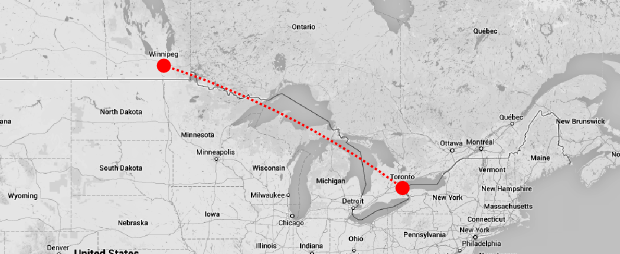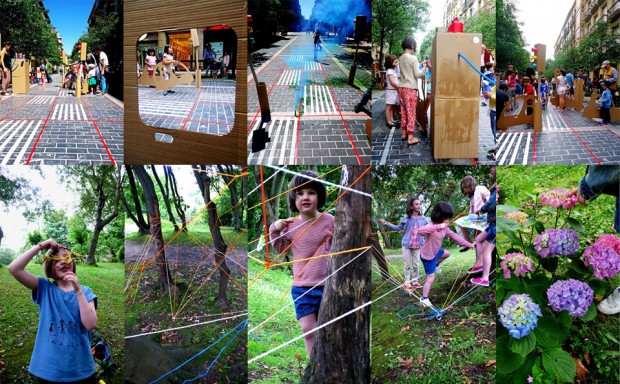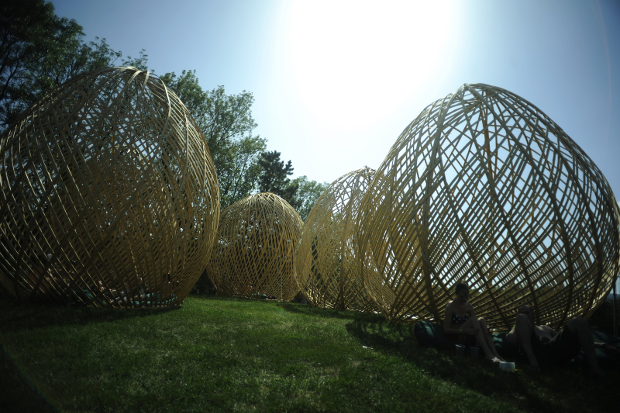
Three weeks ago (Juny 5th-8th ) we were in Linz, Austria, invited by Roland Krebs for a lecture and a workshop, part of an event called Identity City Lab, which is part of the Creative Region program.
The workshop, lead by local collective Schwemmland and Ecosistema Urbano, was aiming to provide some fresh insights and proposals about the eastern harbour area of Linz, a big extension of former ‘schwemmland’ (alluvial land) turned into an industrial area during the second part of the past century.
Some context
The area highlighted in the first image has been slowly fading out of the citizens’ imagination and become a ‘forgotten’ part of the identity of Linz. Tourist maps end right before the border of that area, which is still one of the most important connections of the city with the Danube and with its own history.

Tourist city map – Click to View PDF
Nowadays, the area hosts an active industry and a working logistic transportation system by rail. Interestingly enough, it contains patches of different uses scattered between the industrial facilities: nature (even protected species live there); cultural or recreational zones like an airfield; private gardening and traces of former agriculture; restaurants and small street stalls that sell food to workers and passersby.
Despite the long decades of industrial activity, the 8 meter deep water in the north-eastern docks is usually calm like a mirror and crystal clear… although during our stay it was very muddy due to the flooding that had happened just a couple of days before.
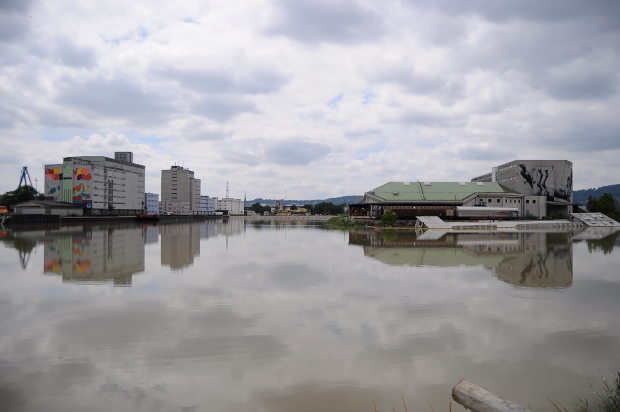
A basin between the docks – deep, calm water forgotten by the city
Some of the docks were recently filled in order to continue the industrial development of the area, which raised some concerns but can also be seen as an opportunity for the city of Linz to re-think its relation with the harbour and the water.

Here comes urban development: filling at one of the docks
Activities
The workshop started with a guided tour by bike around the area, which gave everyone a clearer insight on its different aspects and the opportunity to meet interesting people living and working there. Then we had a first work session at Schwemmland’s office.
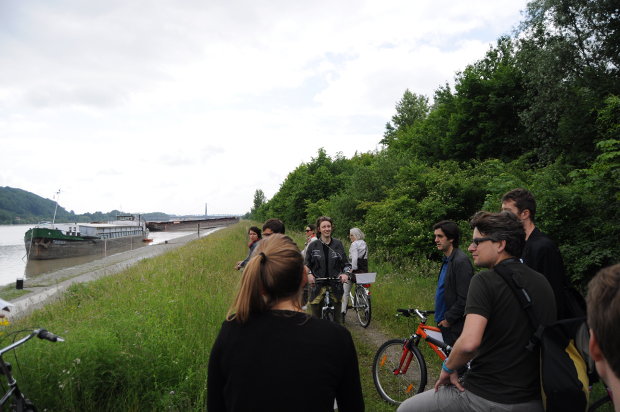
Bike ride by the river

This aerodrome runway is not somewhere in the countryside – it’s right at the harbour!
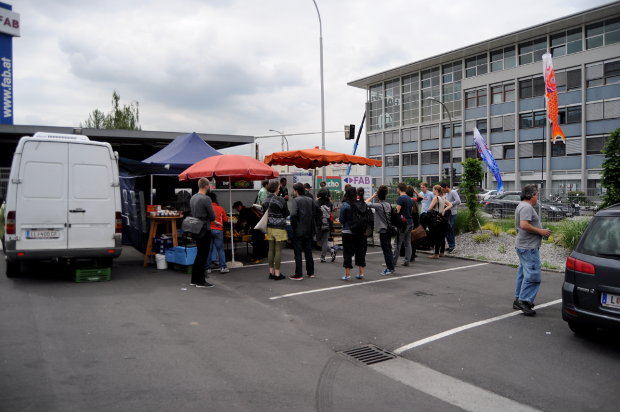
Traditional food stall between the office buildings
The rest of the workshop took place at the Tabakfrabrik, a ‘great’ (both ‘good’ and ‘big’) example of industrial architecture by Peter Behrens and Alexander Popp finished in 1935, which is now being transformed in a cultural center. Some light and temporary structures built of wood, textile and truss systems created a human-scaled space for everyone to work comfortably in the long hall of the second floor.

Working inside the Tabakfabrik, an amazing industrial building of the early XX century
The participants, divided in small groups or couples, worked in quite different approaches, trying to imagine how the new industrial development that is planned for the area could be made compatible with some other uses or initiatives in order to bring that calm, clear water surface and its surroundings ‘closer’ to the city.
Outcomes
Despite the short time we had for developing them, there were some interesting proposals, so we ended up with a set of complementary ideas that will be presented to Linz AG, the company that manages almost every aspect of the city’s operation, maintenance and development.
An urban kitchen which could act as meeting point for the people working in logistics, industry, creative offices and artistic workshops and become a catalyst for activities, designs and actions on site.
An extension of the typical tourist map of Linz, making emphasis on a west-east axis, departing from the main square and connecting cultural facilities and lively urban places in a chain that would lead to Harbouria, a citizen-driven ‘city’ floating in the harbour.
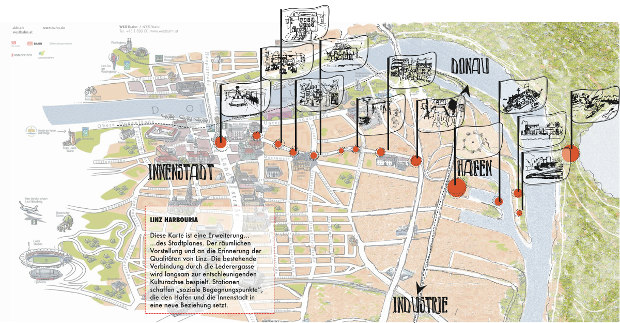
Extending the tourist map and creating a ‘urban life chain’ from the center to the harbour

Harbouria – a floating ‘cuty’ in the docks
A very critical, almost poetical approach, which stated that the spontaneous activities in the harbour area should be preserved without a direct intervention. They talked about what could happen in the spaces “in between” the planned uses such as industry. Could we respect these emergences without trying to plan them?

Explaining how to keep spaces of opportunity without directly pointing at them
One of the proposals was to always keep a public fringe always available and accesible right on the border between the ground and the water. Simple to explain, but with very significative potential results.
And another one approached the place from the point of view of nature: letting the ecosystem take part of the docks back and creating a quiet and slow natural cycle inside the human hectic cycle of production.
We hope that the city will take these suggestions seriously and develop them further. The harbour is an amazing space where the city and the Danube really meet each other, and it shouldn’t be neglected as a potentially valuable public space.
Post in German by Roland Krebs, organizer of the Identity City Lab
Post in German at CreativeRegion website, with more photos
Post about the conference at CreativeRegion website
TREIB GUT magazine, publication about the workshop and our thoughts about the place












